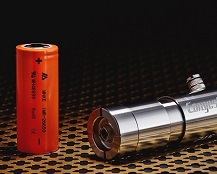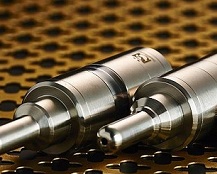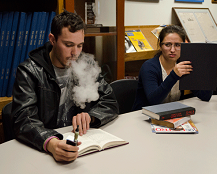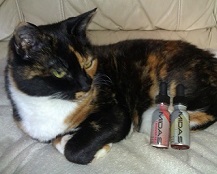Thermal runaway is a possibility with any lithium-based battery, but learning how to minimize the risk helps you stay safe in the world of e-cig mods.
If you ask for too much current from your battery – and your mod doesn’t have a safety cut-off – it could lead to disaster. That’s why vapers need Ohm’s law.
If you’re getting into rebuildable atomizers, learning about safe rebuilding and minimizing the risk of shorts helps you protect yourself and your battery.
Electronic mods have in-built safety features, but mechanical mods depend entirely on you, so taking some extra steps to stay safe is absolutely vital.
Your wick is the part of your e-cig most likely to contaminate your vapor, so learning about preparation and general wick safety is vital for any rebuilders.
Nobody wants burned or blistered lips from vaping, and there are many options for things like heat-resistant drip tips to protect you against the risk.
Are teens who try e-cigarettes more likely to try tobacco cigarettes? Stanton Glantz believes e-cig use may promote smoking.
A new study from Dr. Konstantinos Farsalinos compares nicotine delivery from first generation e-cigs and newer electronic cigarette devices.
The increasing prevalence of e-cigarette use seems to be stalling, as shown by a downward turn in their use among recent ex-smokers (after a continual rise since the start of 2012) and stagnation in usage rates among current smokers and use in respondents’ most recent quit attempts.
Passive vapor may be no more harmful (and probably way better smelling) than smoke and vapor-free human breath and even outdoor air.
A new systematic review from Dr. Konstantinos Farsalinos and Prof. Riccardo Polosa looks at 97 pieces of research on e-cigarettes and their ingredients, providing a comprehensive summary of the body of knowledge to date on e-cigs.
A new pre-clinical study presented at a conference last month suggests that human lung cells with mutations associated with a high cancer risk exhibit more “cancerous behaviors” after being exposed to e-cigarette vapor.
The anti-vaping movement, or more broadly the anti-smoking movement, is driven by ideology, and ideology is downright awful at science.
As ex-smokers, many vapers have actually tried nicotine replacement therapy (NRT) before. This encompasses things like gums and patches, which offer some nicotine in the hopes of minimizing withdrawal symptoms when you try to quit smoking.
Although propylene glycol (PG) is generally recognized as safe for humans and most pets, cats actually have a unique sensitivity to the chemical.
A new piece of research published in the American Journal of Preventative Medicine has offered evidence destined to be used as a justification for spreading fear about the assumed risks of e-cigarettes.
Group buys essentially bypass the vendor, or middle man, allowing the consumer to purchase directly from the manufacturer. Massdrop and Congrevape are seeking to standardize vaping group buys to what can be expected with more traditional products.
New research published in the FASEB Journal has found that smoking cigarettes disrupts the body’s internal clock in both the brain and lungs, leading to a decrease in overall activity and disturbance of the sleep cycle in the mice studied.
A new study published in the International Journal of Environmental Research and Public Health has provided more evidence in support of something vapers have known for a long time: that the variety of flavors available is integral to quitting smoking using electronic cigarettes.
A new piece of research looking at Korean adolescents has led to loud proclamations that e-cigs are a gateway to smoking addiction. The finding echoes concerns of late from hysterical anti-smoking campaigners and groups such as the CDC that e-cigs are some type of Trojan horse through which smoking is going to re-capture society.




















